 W
WAn Dương Vương was the king and the only ruler of the kingdom of Âu Lạc, a classical antiquity state centered in the Red River Delta. As the leader of the Âu Việt tribes, he defeated the last Hùng king of the state of Văn Lang and united its people – known as the Lạc Việt – with his people, the Âu Việt. An Dương Vương fled and committed suicide after the war with Nanyue forces in 179 BCE.
 W
WÂu Cơ (嫗姬) was, according to the creation myth of the Vietnamese people, an immortal mountain snow fairy who married Lạc Long Quân, and bore an egg sac that hatched a hundred children known collectively as Bách Việt, ancestors to the Vietnamese people. Âu Cơ is often honored as the mother of Vietnamese civilization.
 W
WÂu Lạc (Hán tự: 甌貉/甌駱; pinyin: Ōu Luò; Wade–Giles: Wu1-lo4 Middle Chinese (ZS): *ʔəu-*lɑk̚ < Old Chinese *ʔô-râk) was a supposed polity that covered parts of modern-day Guangxi and northern Vietnam. Founded in 257 BCE by a figure called Thục Phán (King An Dương), it was a merger of Nam Cương (Âu Việt) and Văn Lang (Lạc Việt) but succumbed to the state of Nanyue in 180 BCE, which, itself was finally conquered by the Han dynasty. Its capital was in Cổ Loa, present-day Hanoi, in the Red River Delta.
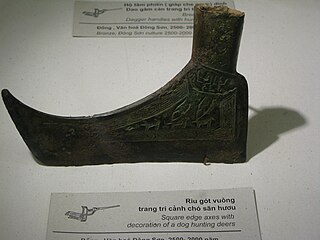 W
WThe Dong Son culture or the Lạc Việt culture was a Bronze Age culture in ancient Vietnam centred at the Red River Valley of northern Vietnam from 1000 BC until the first century AD. Vietnamese historians attribute the culture to the states of Văn Lang and Âu Lạc. Its influence spread to other parts of Southeast Asia, including Maritime Southeast Asia, from about 1000 BC to 1 BC.
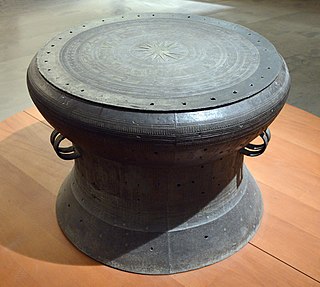 W
WA Đông Sơn drum is a type of ancient bronze drum created by the Đông Sơn culture in the Red River Delta of northern Vietnam. The drums were produced from about 600 BCE or earlier until the third century CE; they are one of the culture's most astounding examples of ancient metalworking. The drums, cast in bronze using the lost-wax casting method are up to a meter in height and weigh up to 100 kilograms (220 lb). Đông Sơn drums were apparently both musical instruments and cult objects.
 W
WThe Hồng Bàng period, also called the Hồng Bàng dynasty, was a legendary, semi-mythical period in Vietnamese historiography, spanning from the beginning of the rule of Kinh Dương Vương over the state of Văn Lang in 2879 BC until the conquest of the state by An Dương Vương in 258 BC.
 W
WHùng king is the title given to the ancient Vietnamese rulers of the Hồng Bàng period.
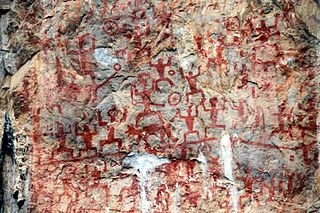 W
WThe Lạc Việt or Luoyue was a group of Austroasiatic tribal people that inhabited ancient northern Vietnam, and, particularly the ancient Red River Delta, from ca. 700 BC to 100 AD, during the last stage of Neolithic South East Asia and the beginning of classical antiquity period. From the archaeological perspectives, they were known as the Dongsonian. The Lac Viet was known for casting large Heger Type I bronze drums, cultivating paddy rice, and constructing dikes. They are also the people who had the earliest written records of Southeast Asia. They are the owners of Bronze Age Đông Sơn culture in mainland Southeast Asia and is widely considered by the Vietnamese people to be their ancestors.
 W
WThe Li-Lao bronze drums or Heger type II drums are a type of ancient bronze drums found in Southern China and Northern Vietnam invented and used by Tai-Kadai-speaking ethnic groups who were known to Chinese as Lǐ (俚) or Lǎo (獠) and who historically inhabited the Red River Delta from the 3rd to 8th century AD and later the Muong people, an ethnic minority in Northern Vietnam, from 10th to 12th century. Classified by Franz Heger as type II to distinguish with the Dian-Dong Son drums or Heger type I, the Karen drum or Heger type III. Li-Lao drums were found in Guangdong, Guangxi, the Red River Delta and the Muong hills.
 W
WCao Lỗ was a Vietnamese weaponry engineer and minister who helped King An Dương Vương build a crossbow, which he christened "Saintly Crossbow of the Supernaturally Golden Claw."
 W
WMỹ Sơn is a cluster of abandoned and partially ruined Hindu temples in central Vietnam, constructed between the 4th and the 14th century by the Kings of Champa, an Indianized kingdom of the Cham people. The temples are dedicated to the worship of the god Shiva, known under various local names, the most important of which is Bhadreshvara.
 W
WNanyue, Nam Việt or Namz Yied, was an ancient kingdom ruled by Chinese monarchs of the Triệu dynasty that covered the modern Chinese subdivisions of Guangdong, Guangxi, Hainan, Hong Kong, and Macau, as well as parts of southern Fujian and northern Vietnam. Nanyue was established by Zhao Tuo, then Commander of Nanhai of Qin Empire, in 204 BC after the collapse of the Qin dynasty. At first, it consisted of the commanderies Nanhai, Guilin, and Xiang.
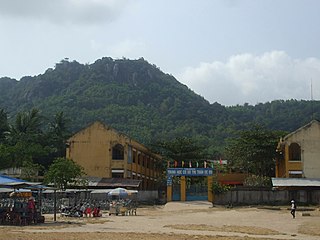 W
WÓc Eo is an archaeological site in Thoại Sơn District in southern An Giang Province, Vietnam, in the Mekong River Delta. Óc Eo may have been a busy port of the kingdom of Funan between the 2nd century BC and 12th century AD.
 W
WLạc Long Quân is a semi-mythical King of Hồng Bàng Dynasty of ancient Vietnam. Quân was the son of Kinh Dương Vương, the king of Xích Quỷ. He is the main figure in the Vietnamese creation myth of Lạc Long Quân-Âu Cơ.
 W
WRinan, formerly known as Jih-nan, was the southernmost commandery of the Han Empire. It was located in the central area of modern Vietnam between Quảng Bình and Bình Định provinces. It was administered by a local mandarin under direction from the capital of Jiaozhi at Leilou or Longbian near modern Hanoi. It was part of Trưng Trắc's revolt in AD 39.
 W
WThe Sa Huỳnh culture was a culture in modern-day central and southern Vietnam that flourished between 1000 BC and 200 AD. Archaeological sites from the culture have been discovered from the Mekong Delta to Quang Binh province in central Vietnam. The Sa Huynh people were most likely the predecessors of the Cham people, an Austronesian-speaking people and the founders of the kingdom of Champa.
 W
WThe Triệu dynasty ruled the kingdom of Nanyue, which consisted of parts of southern China as well as northern Vietnam. Its capital was Panyu, in modern Guangzhou. The founder of the dynasty, called Zhao Tuo, was an ethnic Chinese from Hebei and served as a military governor for the Qin dynasty. He asserted his independence in 207 BC as the Qin dynasty was collapsing. The ruling elite included both Yue and immigrant Han peoples. Zhao Tuo conquered the Vietnamese state of Âu Lạc and led a coalition of Yuè states in a war against the Han dynasty, which had been expanding southward. Subsequent rulers were less successful in asserting their independence and the Han dynasty finally conquered the kingdom in 111 BC.
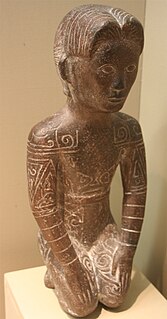 W
WThe Baiyue, Hundred Yue, or simply Yue, were various ethnic groups who inhabited the regions of South China and Northern Vietnam during the 1st millennium BC and 1st millennium AD. They were known for their short hair, body tattoos, fine swords, and naval prowess.